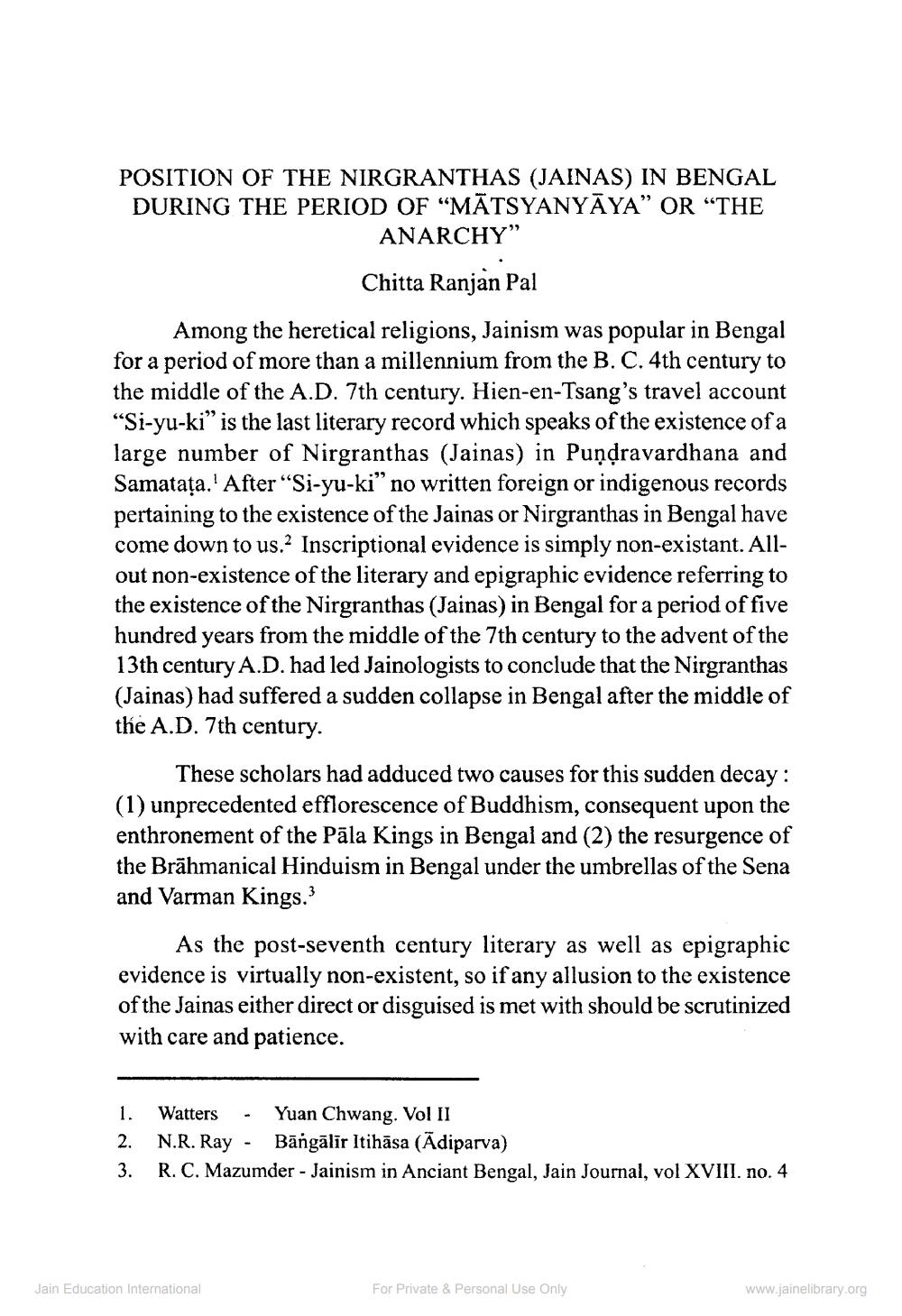________________
POSITION OF THE NIRGRANTHAS (JAINAS) IN BENGAL DURING THE PERIOD OF "MĀTSYANYĀYA” OR “THE
ANARCHY” Chitta Ranjan Pal
Among the heretical religions, Jainism was popular in Bengal for a period of more than a millennium from the B. C. 4th century to the middle of the A.D. 7th century. Hien-en-Tsang's travel account "Si-yu-ki" is the last literary record which speaks of the existence of a large number of Nirgranthas (Jainas) in Pundravardhana and Samataţa.' After “Si-yu-ki” no written foreign or indigenous records pertaining to the existence of the Jainas or Nirgranthas in Bengal have come down to us.? Inscriptional evidence is simply non-existant. Allout non-existence of the literary and epigraphic evidence referring to the existence of the Nirgranthas (Jainas) in Bengal for a period of five hundred years from the middle of the 7th century to the advent of the 13th century A.D. had led Jainologists to conclude that the Nirgranthas (Jainas) had suffered a sudden collapse in Bengal after the middle of the A.D. 7th century.
These scholars had adduced two causes for this sudden decay: (1) unprecedented efflorescence of Buddhism, consequent upon the enthronement of the Pāla Kings in Bengal and (2) the resurgence of the Brāhmanical Hinduism in Bengal under the umbrellas of the Sena and Varman Kings.}
As the post-seventh century literary as well as epigraphic evidence is virtually non-existent, so if any allusion to the existence of the Jainas either direct or disguised is met with should be scrutinized with care and patience.
1. 2. 3.
Watters - Yuan Chwang. Vol II N.R. Ray - Bāngālir Itihāsa (Ādiparva) R. C. Mazumder - Jainism in Anciant Bengal, Jain Journal, vol XVIII. no. 4
Jain Education International
For Private & Personal Use Only
www.jainelibrary.org




